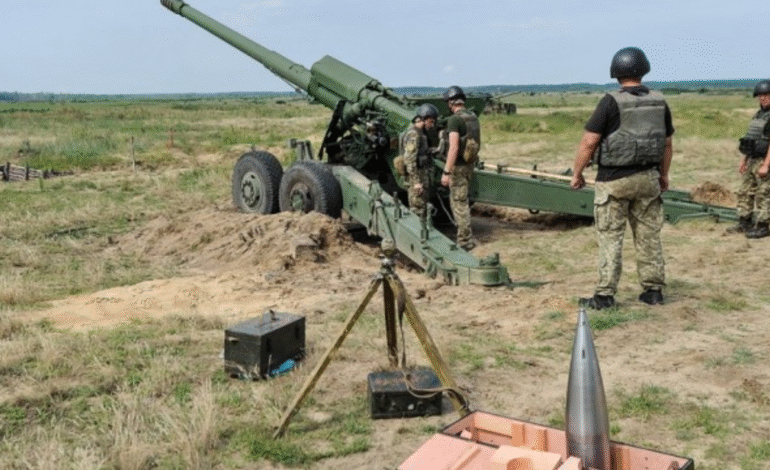Ukraine Forces Hold Strong Amid Massive Russian Assaults in Pokrovsk

In one of the most intense days of frontline combat this year, Ukrainian Armed Forces reported 148 separate clashes with invading Russian troops across various regions on July 15, 2025. The fiercest concentration of fighting was recorded in the Pokrovsk sector, where Russian forces attempted to advance 41 times. This aggressive push was met with organized and forceful resistance from Ukrainian defenders, who not only repelled the bulk of these assaults but also inflicted significant losses on the invading side.
The General Staff of the Armed Forces of Ukraine, in an official evening update released via social media, detailed the day’s developments as of 10 PM. The scale of combat was described as “massive,” involving a combination of missile strikes, drone attacks, aerial bombings, and traditional artillery fire. While the frontline stretched across multiple sectors, it was clear that Pokrovsk had become the epicenter of this wave of aggression, reflecting its strategic importance in the broader war theatre.
Pokrovsk Bears the Brunt: 41 Attacks Repelled, 93 Enemy Troops Neutralized
Within the Pokrovsk sector, the day’s conflict began early and sustained itself well into the evening. Russian units launched aggressive advances near a wide swath of villages and towns, including Popiv Yar, Novoekonomichne, Myroliubivka, Lysivka, Kotlyne, Zvirove, Udachne, and Oleksiivka. Their targets extended toward Rodynske, Pokrovsk, Muravka, Filia, and Dachne areas where Ukrainian fortifications have been strengthened in recent months due to repeated enemy activity.
Despite these wide-ranging attempts, Ukrainian troops maintained firm control across all contact points. Preliminary reports confirmed that 93 Russian soldiers were neutralized in Pokrovsk alone, with 63 of those confirmed dead. Ukrainian forces also destroyed four enemy vehicles and two motorcycles, as well as 22 unmanned aerial vehicles. A Russian artillery cannon was completely destroyed, while another cannon and one tank sustained major damage. The enemy’s logistical and drone warfare capabilities suffered a visible blow, further hindering their attempts to gain ground in this key sector.
Across the Eastern Front: Simultaneous Assaults Met with Resistance
While Pokrovsk endured the most aggressive activity, other parts of eastern Ukraine also experienced sustained combat. The Lyman sector, long known for its volatile frontlines, witnessed 24 separate attempts by Russian forces to breach Ukrainian lines. The towns and settlements targeted included Novyi Myr, Novoiehorivka, Hrekivka, Karpivka, Kolodiazi, Zelena Dolyna, and Torske, along with continued advances toward Shandryholove and Serebrianka. As of the last update, four of these engagements were still active, with Ukrainian troops holding their defensive positions under ongoing fire.
In the Kupiansk sector, Russian troops tried to push forward five times during the day. Their assaults were concentrated around Stepova Novoselivka, Zahryzove, and Pishchane. All five attempts were unsuccessful, as Ukrainian defense units successfully countered each incursion. The attackers were forced to retreat, leaving behind a trail of damaged equipment and personnel casualties.
Kramatorsk also came under attack, with seven engagements taking place in locations such as Predtechyne, Bila Hora, and Stupochky. One of these clashes was still underway as of the late evening. Ukrainian forces reported no territorial losses and continued to maintain tactical superiority in these zones.
Northern and Southern Sectors Show Continued Russian Pressure
The day began with heightened tensions in the Northern Slobozhanshchyna and Kursk sectors. Ukrainian forces reported ten engagements in these areas. Russian forces deployed one airstrike during the day, which involved four guided bombs. Additionally, Ukrainian positions were shelled 165 times, including three attacks using multiple launch rocket systems. The repeated shelling of both military and civilian areas added pressure to frontline communities, even as ground troops held firm.
Further south, the Southern Slobozhanshchyna region saw Russian ground forces attempt four offensive actions. These assaults were focused near Vovchansk and Stroivka, both of which have been the sites of prior engagements. Ukrainian units repelled all four attacks effectively. One combat engagement was still in progress by nightfall, with Ukrainian defenders continuing to resist the incursion.
The Siversk sector also came under limited assault, with two Russian attacks near the towns of Hryhorivka and Vyimka. These attempts were met with rapid and well-coordinated resistance, allowing Ukraine to retain full control over contested areas. Similarly, in the Toretsk sector, five attacks were launched against Ukrainian positions. The enemy targeted Dyliivka, Toretsk, Novospaske, and Rusyn Yar. Ukrainian units held the line, preventing Russian troops from making any strategic gains.
Novopavlivka and Orikhiv: Widening the Conflict Zone
In the Novopavlivka sector, Ukrainian soldiers faced a sizable number of offensive maneuvers. Russian forces launched 22 attacks in the vicinity of Zaporizhzhia, Piddubne, Lisne, Myrne, Maliivka, Shevchenko, and Novosilka. An additional attempt to breach defenses near the settlement of Novokhatsk was also reported. As of late evening, three clashes were still ongoing, suggesting that this front remains vulnerable to further escalations. Ukrainian forces responded with counteroffensive tactics and artillery cover, seeking to minimize loss while containing enemy advancement.
Meanwhile, the Orikhiv sector experienced aerial bombardment but no active ground incursions. A Russian airstrike was launched targeting the area around Novoandriivka. Damage assessments were underway, but no casualties were immediately reported. Ukrainian forces maintained vigilance in anticipation of any follow-up operations.
In contrast, the Huliaipole sector remained largely quiet on July 15. No enemy ground operations were observed in this area, although air surveillance was maintained throughout the day to detect any shifts in Russian tactics.
Prydniprovske Sector: Defending the Southern Dnipro Corridor
One of the more strategically sensitive areas, the Prydniprovske sector, once again became the stage for Russian ground operations. Ukrainian forces successfully repelled seven separate attacks by Russian troops attempting to gain control near the Antonivskyi Bridge and the surrounding islands of Kozulskyi and Zabych. These locations are crucial for maintaining logistical access along the southern Dnipro River corridor, and repeated Russian interest in this region reflects its broader military value.
The Defense Forces noted that these attempts were part of a larger campaign to cut off Ukrainian southern supply routes. However, well-prepared defenses, combined with aerial reconnaissance and fast-response artillery teams, helped blunt each Russian maneuver before it could develop into a more dangerous breach.
Scale and Volume of Russian Attacks Reflect Escalation Strategy
Across all sectors combined, Russian forces conducted one missile strike and a total of 39 airstrikes, with 61 guided aerial bombs deployed. This aerial offensive was paired with an overwhelming number of loitering munitions—an estimated 1,218 kamikaze drones were used throughout the day. Additionally, over 4,000 shelling incidents were recorded by Ukrainian command centers, affecting both troop positions and residential settlements near the front lines.
This concerted military effort points to a deliberate escalation on Russia’s part, possibly aimed at regaining momentum following months of Ukrainian counter-offensives and localized tactical victories. However, despite the intensity and coordination of these attacks, Ukrainian defense units remained largely in control of their positions and inflicted notable casualties on the attackers.
Military analysts based in Kyiv suggest that Moscow may be under internal pressure to deliver results, prompting these large-scale offensives. Yet, the lack of significant territorial gains and mounting equipment losses hint at operational overextension rather than strategic dominance.
Tactical Analysis: Pokrovsk as a Key Battleground
What distinguishes the Pokrovsk sector from other regions is its strategic positioning in Donetsk Oblast. Control over this area not only influences east-west movement corridors but also affects access to nearby logistical and resupply routes. Ukrainian military planners have prioritized the fortification of this sector, and recent days have seen increased aerial surveillance and pre-emptive artillery positioning.
The July 15 clashes in Pokrovsk demonstrated the ability of Ukrainian troops to coordinate across units, communicate quickly under pressure, and deliver efficient counterattacks. The destruction of 22 enemy drones and the disabling of critical enemy hardware further limited Russian battlefield effectiveness. While Ukraine paid a toll in terms of resources, the defense posture held, and no village or town was reported as having fallen into enemy hands.
Ukrainian Defense Remains Resilient Despite Intensifying Pressure
The July 15 report from the General Staff illustrates the high-stakes nature of modern warfare across Ukraine’s eastern and southern fronts. While Russian forces intensified their efforts using a combination of air power, artillery, and drone warfare, they encountered strong, coordinated resistance from Ukrainian defenders who not only held the line but delivered serious blows to enemy manpower and assets.
The battle for Pokrovsk is emblematic of Ukraine’s broader strategic posture one that emphasizes mobility, flexibility, and resilience. As the summer phase of the war continues, attention will remain focused on whether Russian forces can sustain this level of assault or if their attrition will outpace their capacity to reinforce.
Ukraine, for its part, has demonstrated once again that it is prepared to meet any renewed threats with discipline, tactical readiness, and a national will to protect its territorial integrity.







